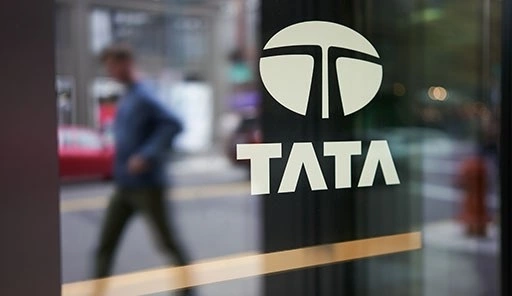As of February 2025, the Tata Group continues to strengthen its position as a leading global conglomerate, achieving significant milestones across various sectors. In the financial year 2023-24, Tata Sons, the principal holding company, reported a 74% increase in profit, with consolidated revenues rising by 15% to ₹4.77 lakh crore.
Under the leadership of Chairman Natarajan Chandrasekaran, the group has emphasized growth in electronics, electric vehicles (EVs), batteries, and steel.
Tata Motors is focusing on local battery manufacturing to maintain its lead in the EV market amid rising competition.
In the technology sector, Tata Consultancy Services (TCS) surpassed revenue expectations, reporting a 7.7% increase in consolidated revenue for the second quarter of FY25.
The group is also making significant strides in renewable energy. Tata Power plans to invest up to $9 billion to quadruple its renewable energy capacity to over 20 gigawatts within the next five to six years.
Additionally, Tata Electronics is investing $14 billion to establish India’s first semiconductor fabrication facility in Gujarat and a chip-assembly and testing facility in Assam, aiming to bolster the country’s semiconductor ecosystem.
These strategic initiatives underscore the Tata Group’s commitment to innovation, sustainability, and leadership across diverse industries now let’s have a glance on the detailed SWOT Analysis of TaTa Group.
Strengths
- Diversified Business Portfolio: Tata Group operates across various sectors, including IT services through Tata Consultancy Services (TCS), automotive via Tata Motors, and steel production with Tata Steel. This diversification mitigates risks associated with market volatility in any single industry.
- Robust Financial Performance: In the fiscal year 2023-24, Tata companies collectively reported revenues exceeding $165 billion, with a combined market capitalization surpassing $365 billion as of March 31, 2024.
- Strategic Acquisitions and Expansions: The group’s acquisition of Air India in 2022 marked a significant expansion in the aviation sector. Under Tata’s ownership, Air India has embarked on a five-year transformation plan, inducting 100 aircraft and launching over 100 routes within two years, aiming to restore its reputation and expand globally.
- Commitment to Sustainability: Tata Group has initiated ‘Project Aalingana,’ focusing on decarbonization, circular economy principles, and environmental preservation, with a vision to achieve Net Zero by 2045.

Weaknesses
- Operational Challenges in Acquired Entities: Despite progress, Air India continues to face challenges, including customer complaints about old aircraft and service quality, indicating ongoing issues in operational efficiency and customer satisfaction.
- Exposure to Global Market Fluctuations: TCS, a significant contributor to the group’s revenue, reported a 5.6% revenue increase to ₹639.73 billion in the third quarter ending December 31, 2024, slightly below analyst expectations, due to underperformance in the North American market for the fifth consecutive quarter.
- Complex Organizational Structure: The conglomerate’s vast and diverse operations can lead to challenges in coordination and management across different sectors and geographies.
Opportunities
- Advancement in Technology and Manufacturing: Tata Group is exploring semiconductor manufacturing in India, with Tata Electronics set to invest $14 billion to establish the country’s first semiconductor fabrication facility in Gujarat and a chip-assembly and testing facility in Assam. This aligns with India’s initiative to become a global semiconductor production hub.
- Green Steel Production: Tata Steel has secured its first “green steel” contract with JCB, utilizing steel from a new electric arc furnace to be built at Port Talbot in Wales. This initiative is expected to reduce the UK’s carbon emissions by 1.5% and aligns with the group’s sustainability goals.
- Growth in the Automotive Sector: Tata Motors reported its highest-ever consolidated net profit at ₹31,807 crore in FY24, with revenues up 26.6%. The company continues to focus on electric vehicles and sustainable transportation solutions, aligning with global trends towards green mobility.
Threats
- Economic Uncertainties: Global economic downturns or domestic economic challenges, such as inflation and policy changes, can affect consumer spending and demand across various sectors in which Tata operates.
- Intensifying Competition: The conglomerate faces stiff competition in its diverse business segments, requiring continuous innovation and efficiency to maintain market share.
- Regulatory Challenges: Changes in government policies, environmental regulations, and international trade agreements can impact operations, necessitating adaptability and compliance across different markets.
Conclusion
In 2025, Tata Group continues to leverage its diversified portfolio, robust financial performance, and strategic initiatives to maintain its leadership position across various industries. The group’s commitment to sustainability and technological advancement positions it well for future growth. However, addressing operational challenges, navigating economic uncertainties, and managing regulatory complexities will be crucial to sustaining its competitive edge in the global market.
Anantha Nageswaran is the chief editor and writer at TheBusinessBlaze.com. He specialises in business, finance, insurance, loan investment topics. With a strong background in business-finance and a passion for demystifying complex concepts, Anantha brings a unique perspective to his writing.


